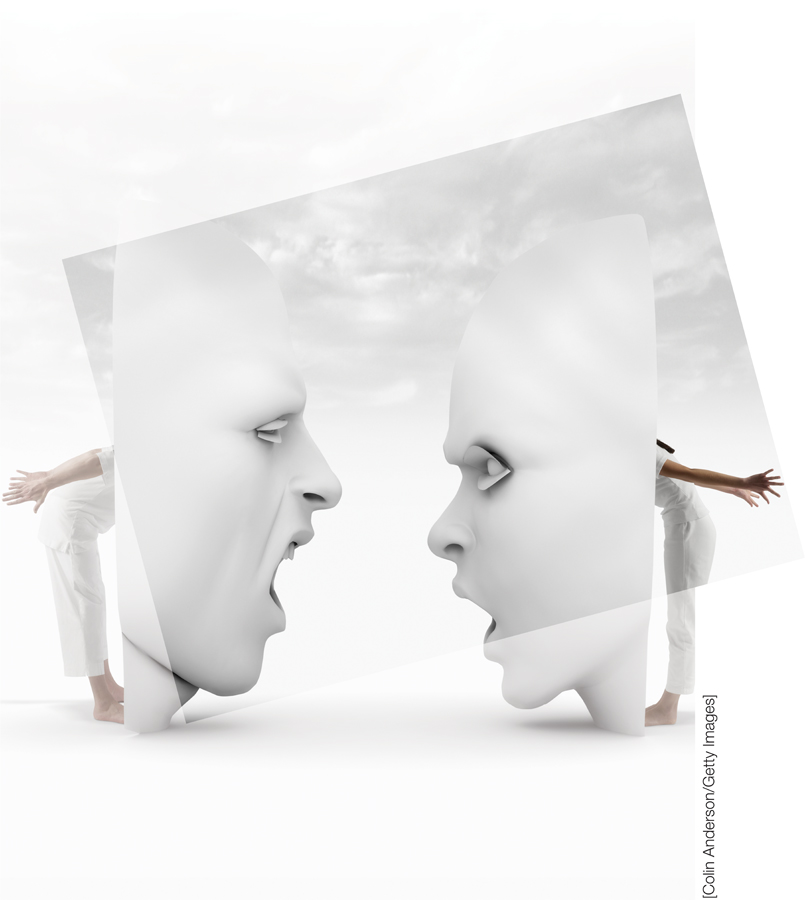Chapter Introduction
| CHAPTER | 12 |
Interpersonal Aggression
424

425
TOPIC OUTLINE
Defining Aggression
The Role of Intention
The Harm Caused by Aggression
Affective and Instrumental Aggression
Measuring Aggression
Biology and Human Aggression
An Ethological Perspective
The Physiology of Aggression
Natural-
born Pacifists Uniquely Human Aspects of Aggression
Situational Triggers of Aggression: The Context Made Me Do It
The Frustration-
Aggression Hypothesis When Do Hostile Feelings Lead to Aggression? The Cognitive Neoassociationism Model
Priming Aggressive Cognitions
Inhibitors of Aggression
Learning to Aggress
Electronic Media and Aggression

SOCIAL PSYCH AT THE MOVIES Violence on Film: Taxi Driver Application: Family Life and Aggression
Culture and Aggression

SOCIAL PSYCH OUT IN THE WORLD Race and Violence in Inner- City Neighborhoods Individual Differences in Aggression
Gender Differences in Aggression
Aggressive Behavior Across the Life Span
Trait Aggressiveness
Intelligence
Personality Traits and Reactivity to Provocation
The Roles of Alcohol and Other Drugs in Aggression
Violence Against Women
Domestic Violence
Sexual Coercion and Rape
Reducing Aggression
Societal Interventions
Interpersonal Interventions
Individual Interventions

All humans are capable of aggression, and monsters often don’t look like monsters. Does this man look like a mass murderer? Maybe not, but in 2011 he set off a bomb in an office building before committing mass murder at a summer camp.
Nonviolence means avoiding not only external physical violence but also internal violence of spirit. You not only refuse to shoot a man, but you refuse to hate him.

Tina Meier gazes at a picture of her daughter, Megan Meier, who committed suicide on October 16, 2007, after being victimized by cyberbullies. Tina created the Megan Meier foundation (meganmeierfoundation.org) to teach others about the harmful effects of internet harassment.
Martin Luther King, Jr. (1992, p. 102)
Our discussion of prejudice reveals that humans have done each other great harm because of differences in nationality, ethnicity, religion, and worldviews. If you total all the killings by all the known mass murderers over recorded history, they would make up a small drop in a very bloody bucket compared with the state-
426
On July 22, 2011, a 32-
In the second case, a 14-
Fortunately, extreme acts such these two tragic examples are relatively rare. On the other hand, which of us has never insulted, pushed, snapped at, or even punched or kicked another individual (or wanted to) sometime in our lives? Almost all of us have engaged in at least minor acts of aggression. Such minor acts often do not cause serious or lasting harm to their targets. But consider the following statistics (Flannery et al., 2007; Hall, 1999; Rapp-
Reports of child abuse range between about 2 to 3 million per year in the United States.
Twenty to 30% of American romantic partners report that acts of aggression have occurred in their relationships.
On average, a woman in the United States is raped every 6 minutes. Over 70% of these rapes are committed by someone the woman knows. In addition, about 4% of male inmates in U.S. prisons report having been sexually assaulted.
Some American cities average more than one murder per day.
How can we understand such interpersonal aggression? As with all human actions, we have to look to biology, culture, learning, emotion, motivation, personality, and situational factors to gain a complete picture (e.g., Berkowitz, 1993). In this chapter, we’ll examine each of these factors and how they relate to different types of aggression. We will also briefly consider how to apply knowledge of the causes of aggression to reduce interpersonal violence in society.
427